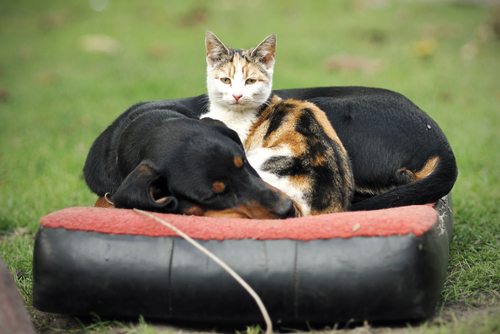Most dog owners spread their love among many species and aren’t canine specific in their devotion. With so much love to spread around, eventually there will come a time when they will bring different animals into the home. How does one go about introductions, with little stress and even less fanfare? Below are some tips on how to effectively introduce the dog to other animals.
(Important: Be aware of their prey drive, is the dog of a breed with high-prey drive? It might be best to keep the smaller members of the pack out of reach.)
Birds
Some dogs are naturally drawn to birds, and they may want to lick or sniff to their heart’s content. The smaller more skittish birds such as Budgies and Finches may have an issue with this, but larger birds like the bigger parrot varieties may not be bothered by a wet nose up their backside. Start slow with the introductions, in a neutral part of the house where there are no issues of territory. Birds can be as territorial as dogs when it comes to their home and space.
Rabbits
While the rabbit is safe inside his hutch call the dog over and have him lie down. Keep the mood calm, the voice even and pet both animals equally. Be sure not to show one animal more attention than the other, as this may cause jealousy issues later on. Let the dog sniff at the cage and even at the bunny, if he is willing. If the bunny appears to be skittish, limit the interaction and try again the next day. When the time comes that both animals are willingly sniffing and curious about each other, get another member of the family in on the introductions. While each human holds an animal, allow them to sniff and explore each other.
Rodents
Whether the rodent is a rat, guinea pig, hamster or chinchilla, a dog will be curious to find out who the newest member of the family is. As with the rabbit, allow the dog to calmly approach the cage and sniff around, getting an idea of what it is. Praise the dog for his calm nature and natural curiosity. Eventually bring the rodent out to meet the dog, keeping the atmosphere calm and inviting for both animals.
Even if the dog has a low-prey drive there are still triggers that may set off a desire to chase and kill smaller animals. Because of this fact, always remain present when the animals interact with each other. It may seem like everything is copacetic, but it’s always better to err on the side of caution to avoid a potential accident.

